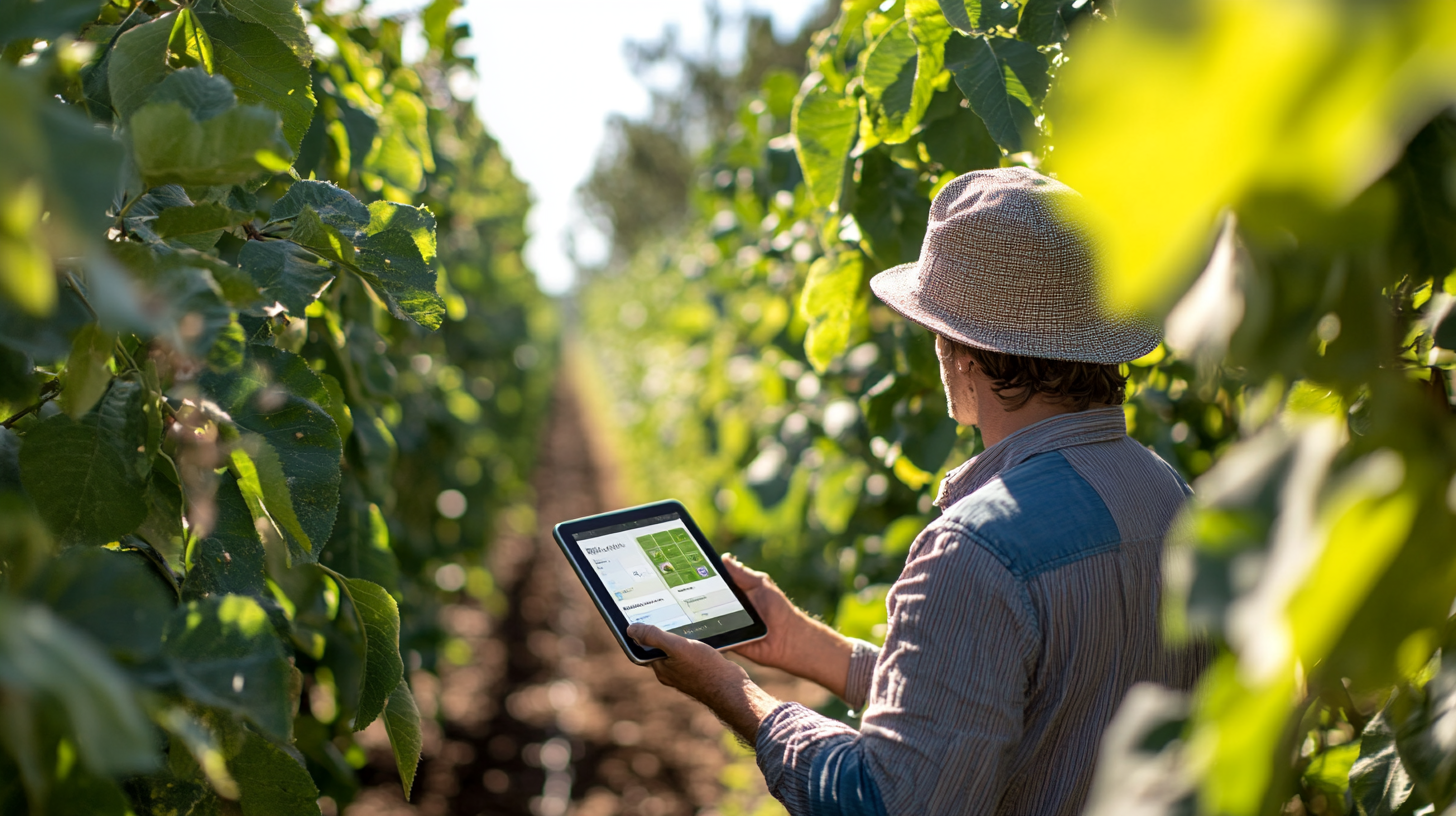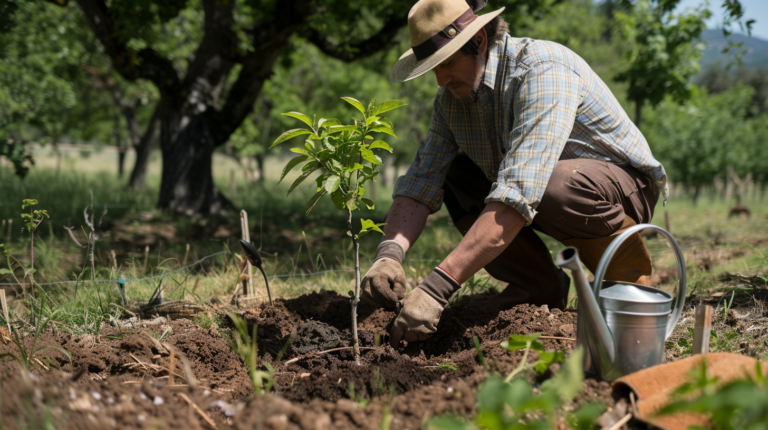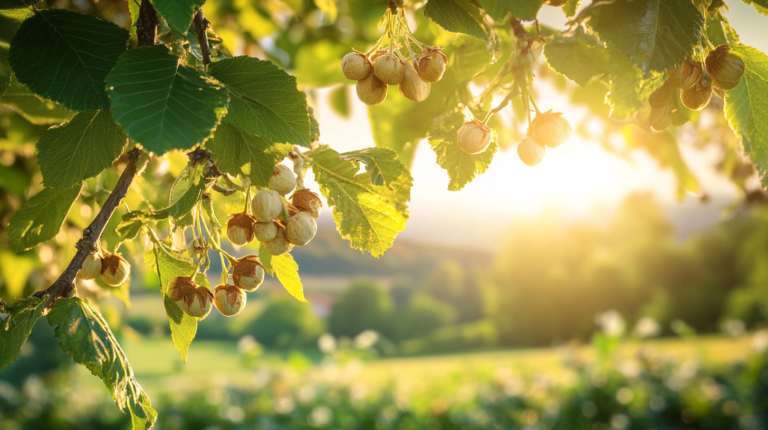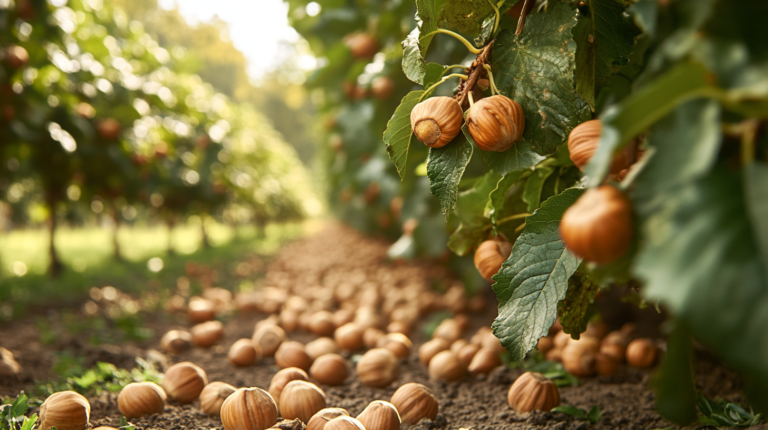Top Innovations in Hazelnut Harvesting Technology
This article explores the latest advancements in hazelnut harvesting technology, from traditional methods to cutting-edge solutions. For a more in-depth understanding of how hazelnuts are grown, check out our comprehensive guide to growing hazelnuts.
Traditional Harvesting Methods
Historically, hazelnut harvesting was a labor-intensive process primarily done by hand. Farmers would manually collect nuts from the ground or shake branches to dislodge the nuts. While these methods are still used in some regions, particularly for small-scale operations, they are time-consuming and inefficient for large commercial orchards[1].
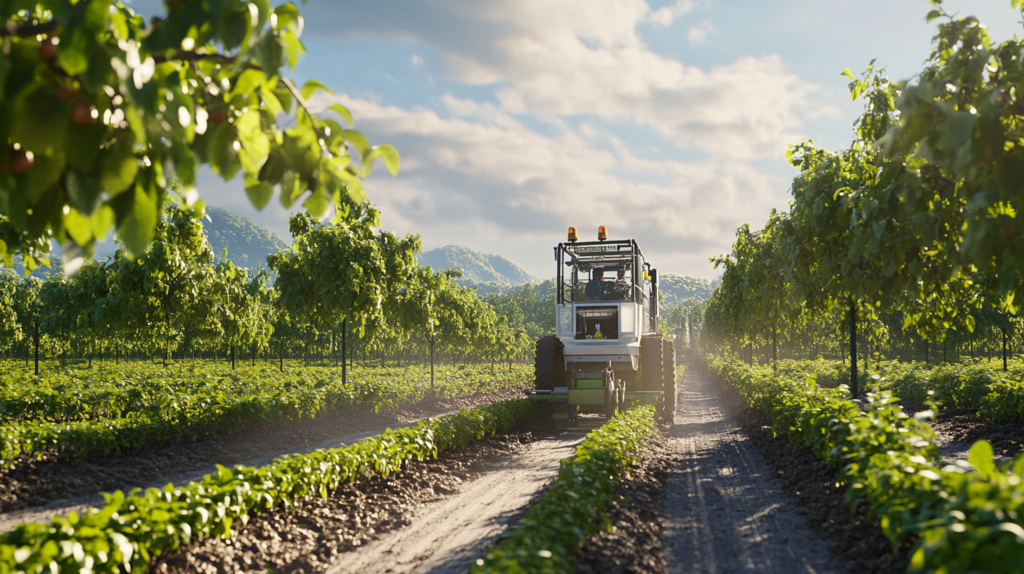
Mechanical Harvesting Innovations
– Portable Pneumatic Harvesting Machines
Mechanical harvesting innovations have transformed hazelnut harvesting technology. With advancements like self-propelled harvesters and portable pneumatic machines, hazelnut harvesting has become more efficient and less labor-intensive.:
- Backpack-style design for portability
- Two-stroke Otto motors for power
- Dual functionality as leaf blowers
- Ability to gather nuts in both linear and brush-planting systems[1]
– Self-Propelled Harvesters
Self-propelled harvesters represent a major leap in hazelnut harvesting technology. These machines have completely replaced manual harvesting in many large-scale operations, particularly in countries like Italy. The benefits of self-propelled harvesters include:
- Increased harvesting rates (from 100 kg/h to over 1000 kg/h)
- Reduced operating time and costs
- Improved operator safety and comfort
- Enhanced control of ergonomic factors (dust, noise, posture)[2]
– Vacuum Harvesters
Vacuum harvesters are another innovation that has significantly improved hazelnut collection efficiency. These machines come in various configurations:
- Pulled vacuum harvesters
- Harvesters with side-pickers and trailers
- Self-propelled aspirating harvesters
Performance of these machines varies based on factors such as orchard conditions, row length, and production levels. Harvesting rates range from 0.2-0.4 ha/h for pulled machines to 0.35-0.5 ha/h for self-propelled models[2].
Traceability and Digital Innovations
– Field Companion Application
Mountain Hazelnuts, a company operating in Bhutan, has developed an Android-based Remote Monitoring & Traceability system called Field Companion. This digital tool revolutionizes hazelnut production management by:
- Tracking hazelnuts from cultivation to export
- Enabling real-time operational reporting
- Facilitating expert intervention and best practice sharing
- Aggregating data for pattern analysis[3]
This innovation not only improves operational efficiency but also enhances transparency in the supply chain, allowing end consumers to access detailed information about the nuts they consume.
Cultivation and Pollination Innovations
– Tissue Culture Propagation
To optimize quality and productivity, innovative tissue culture techniques have been developed for hazelnut propagation. Benefits of this method include:
- Rapid exponential growth of genetically identical plants
- Controlled laboratory environment for consistent results
- Year-round multiplication, stabilizing production[3]
– Grafting Programs
Large-scale grafting programs have been implemented to improve orchard productivity through enhanced pollination. These programs involve:
- Selection and importation of scion wood from complementary hazelnut varieties
- Rigorous phenological assessment
- Innovative treatments to eliminate contamination risks
- Development of unbroken cold chain logistics for scion wood transportation[3]
Post-Harvest Innovations
– Optimized Drying Systems
Proper drying is crucial for maintaining hazelnut quality and preventing spoilage. Innovations in drying technology include:
- Low-cost, easily transportable drying units
- Solar and electric power operation
- Capacity to reduce moisture content by 10% within 24 hours
- Strategically located drying units at harvest collection centers[3]
These optimized drying systems ensure that hazelnuts reach processing facilities at the ideal moisture content, preserving quality throughout the supply chain.
Challenges and Future Directions
Despite these technological advancements, the hazelnut industry still faces several challenges:
– Soil Acidity
Soil acidity remains a significant issue in many hazelnut-growing regions. Understanding the best soil types for growing hazelnuts can help growers optimize their soil management practices[4].
– Weather Variability
Unfavorable weather conditions can significantly impact hazelnut yields and quality. Developing technologies to mitigate the effects of adverse weather, such as improved irrigation systems or protective structures, could be a focus of future innovations[4].
– Sustainability and Waste Reduction
As the industry moves towards more sustainable practices, innovations in by-product utilization are gaining importance. Recent research has explored various applications for hazelnut shells, skins, and oil cakes:
- Hazelnut shells: Used for bioenergy production, as adsorbents for wastewater treatment, and in the production of activated carbon
- Hazelnut skins: Rich in antioxidants, with potential applications in food and nutraceutical industries
- Hazelnut oil cakes: Used in food products as a source of protein and fiber[5]
These innovations not only reduce waste but also create additional value streams for hazelnut producers.
Economic Impact and Industry Trends
The adoption of innovative harvesting technologies has had a significant impact on the hazelnut industry:
- Increased production capacity: Countries like Georgia are expecting harvests of up to 50,000 tons in 2024, partly due to government support programs for nut production[4].
- Improved product quality: Mechanical harvesting and optimized post-harvest handling have led to more consistent nut quality.
- Market expansion: Enhanced production capabilities have allowed producers to meet growing global demand for hazelnuts.
Conclusion
Innovations in hazelnut harvesting technology have transformed the industry, boosting efficiency, productivity, and product quality. From mechanical harvesters to digital traceability and optimized post-harvest processes, these advancements have set the hazelnut industry on a path of continued growth.
As the industry evolves, future innovations in hazelnut harvesting technology will likely address challenges such as soil management, weather resilience, and sustainability. The integration of AI, machine learning, and environmentally friendly methods are key areas for future development.
Ongoing investment in research, collaboration among stakeholders, and technological innovation will be crucial for further advancements in hazelnut harvesting technology, enhancing efficiency, profitability, and sustainability for producers and consumers alike.
Sorces:
[1] https://journals.tubitak.gov.tr/cgi/viewcontent.cgi?article=1333&context=agriculture
[2] https://www.ishs.org/ishs-article/686_48
[3] https://www.mountainhazelnuts.com/innovations
[4] https://www.freshplaza.com/europe/article/9599687/georgia-expects-a-harvest-of-up-to-50-000-tons-of-nuts-in-2024/
[5] https://www.mdpi.com/2071-1050/16/6/2577
[6] https://www.researchgate.net/publication/372045913_Hazelnut_Harvesting_Machines_Recent_Advances_and_New_Trends
[7] https://nuttechnology.com/production/hazelnut/harvesting-hazelnut
